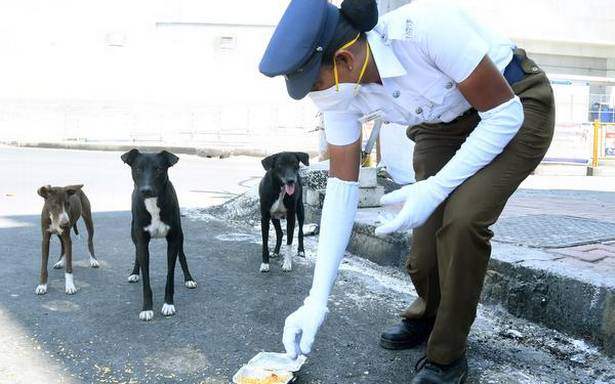Catching all the dogs in a particular patch within a short time frame and ensuring 100 p.c. sterilisation is the best approach, says Don Williams from the Blue Cross of India
This situation resulted in two contrasting pictures: One raising the question of where the dogs had gone; and the other of whether the canine population was being managed properly.
Don Williams, general manager — rescues at Blue Cross of India says that though the ABC programme had been put on hold during intense lockdowns and severe restrictions, “the increase in dog population in some areas were the result of movement (in search of food), and not reproduction,”
Though it stood out in bold relief on IT Corridor that is lined with food joints, canine movement of this kind was witnessed in all parts of Chennai in varying degrees depending on the availability of food.
“ABC programmes had come to a standstill during the intense lockdowns. We cannot deny that. We were doing rescues and treatments. At that time, even Greater Chennai Corporation had to put its ABC programme on hold due to the focus on the pandemic. These dogs migrated to places where they found more food. The population of dogs in certain areas dwindled and in certain others, swelled.
During the period, Blue Cross was feeding 2000 dogs a day. On the IT Corridor, dogs would usually be found around the eateries. Where eateries have opened for business as a result of the relaxations, the dogs have now returned to their old territories. With the easing of relaxations, the ABC programme resumed,” says Williams.
Counting the dogs with a notch on the right ear that suggest sterilisation, one gets the impression that the ABC programmes happen in patches, leaving uncovered areas.
Williams points out that this situation results from random catching of dogs here and there, and not marking an area and focussing entirely on it and completing the exercise at one go.
“When a corporate, a college or an apartment association engages us to catch the dogs on their premises and have them sterilised and vaccinated, we catch all the dogs. If there are 50 dogs we catch all of them the same day. We do not catch five dogs and go back the next day to catch the others. When you start doing things that way, you educate the animal to become smarter. When the rest of the dogs see you, they flee. When we go out, we catch all the animals, whether they are male or female, sterilise and vaccinate them and put them back in the same place. Carrying out an ABC programme in this manner will ensure there are no uncovered patches in the areas brought under under focus.”
Source: Read Full Article

